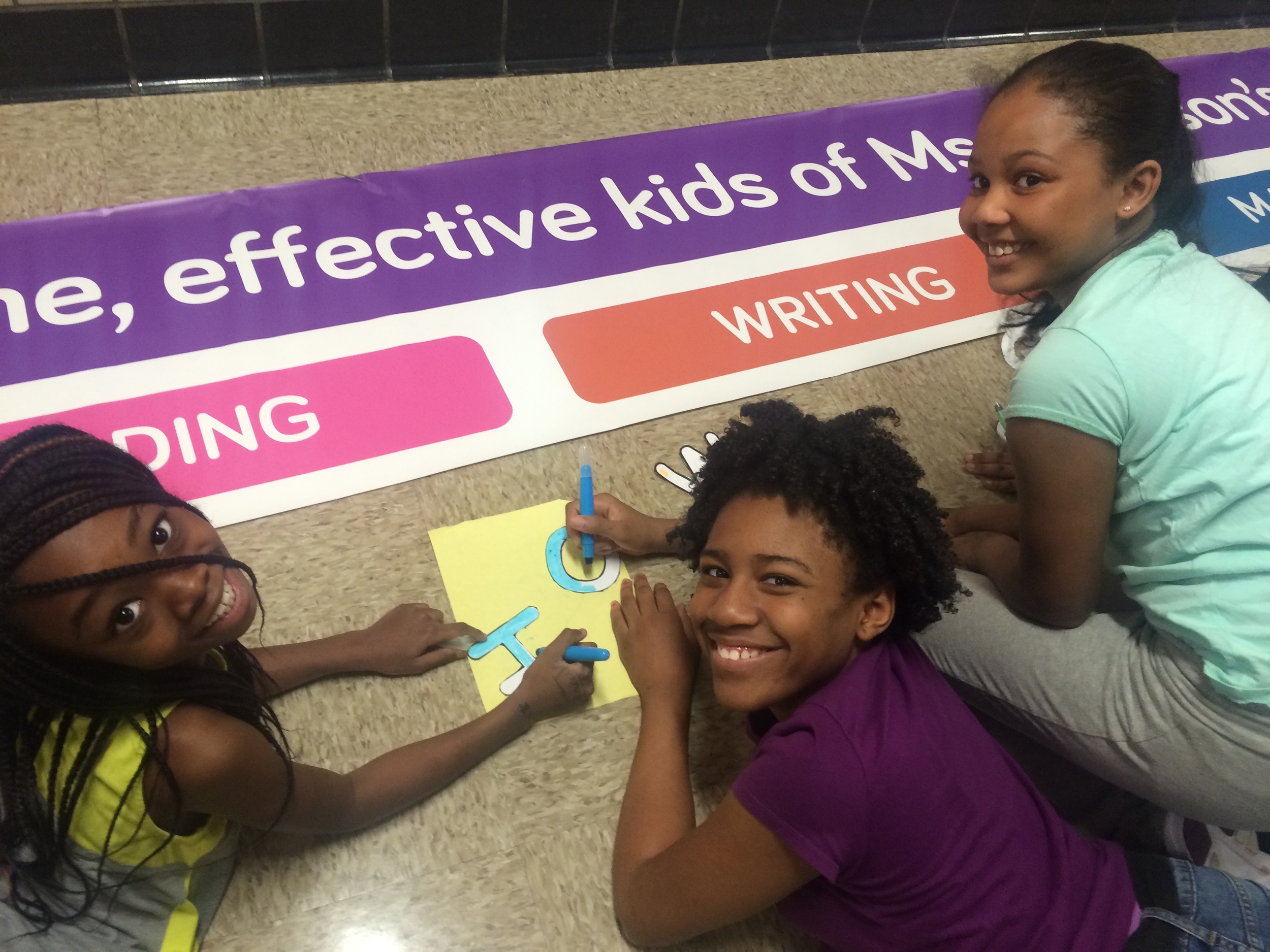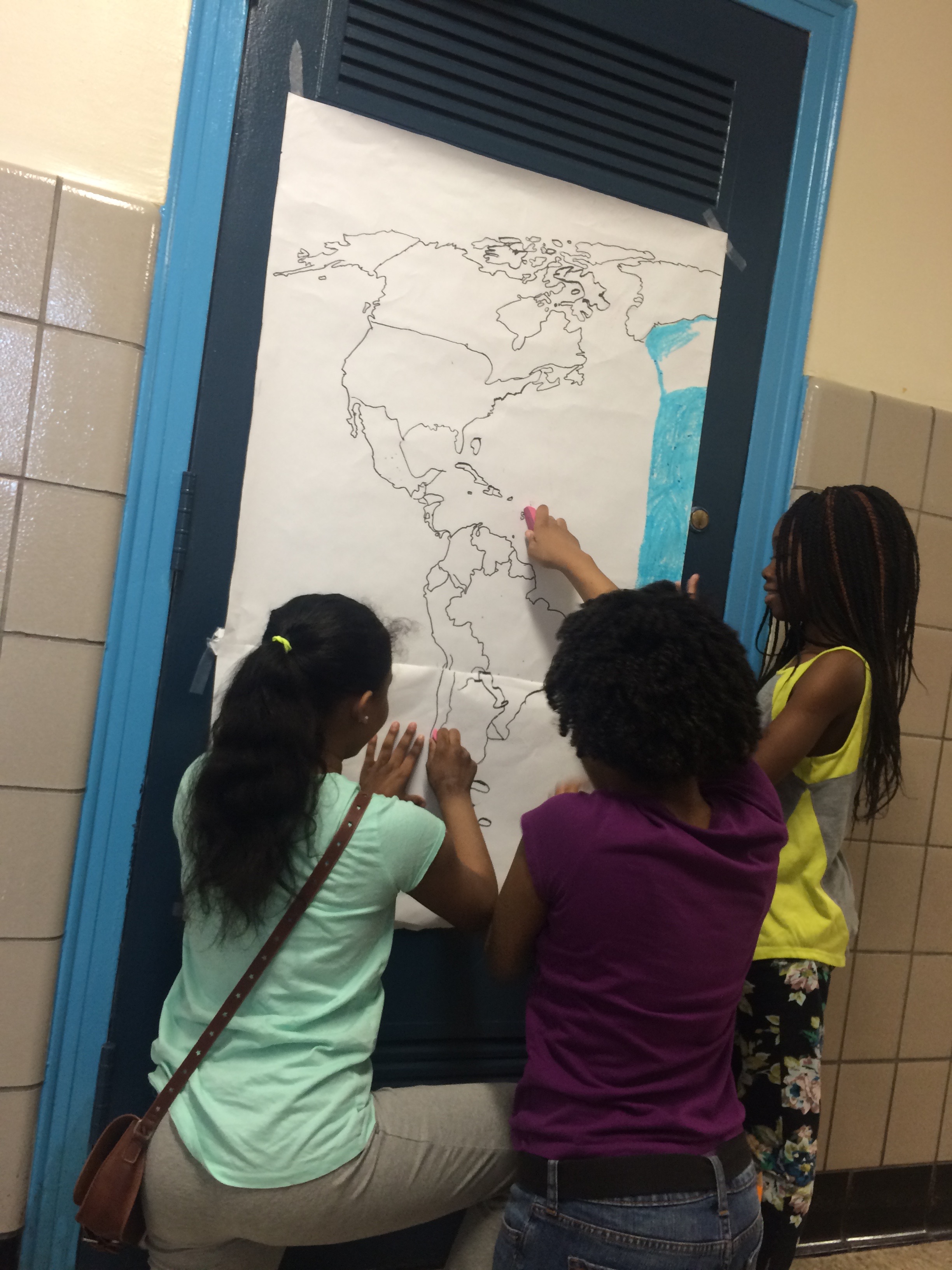DK Holland and Dr. Patricia Crain de Galarce
In order to understand from kids how their learning may be improved, Inquiring Minds spent a year embedded in a 5th grade classroom, in PS 20, a title 1 school in Brooklyn. It struck us immediately that many of the students were aching for responsibility, curious about the world around them, and full of ideas of how they might learn best. And, when the students were asked to sit and listen they became increasingly placid and disengaged.
Teachers often feel a great urgency to create learning environments where all students can find success. They struggle to shift to a more constructivist approach, integrating curriculum and inquiry. The pressures of testing often cause panic and teachers revert to a lecture style in attempts to pour in the information and cover standards. This can be, of course, a placebo: It may create the illusion of learning while deep understanding may not be happening at all.
Together we wanted to reverse the downward trend in this classroom so that students would be actively engaging in accountable talk 80% of the learning time rather than passive listening. Using design thinking, we came up with an interactive Learning Wall.
We asked the students in Kids’ Council* if they wanted to come to school on a Saturday to help create the wall. Pizza was the enticement (irresistible to 10 year olds). Several Kids’ Council members were eager to help. The design team also included adults: Inquiring Minds (Monica Snellings, Patricia Crain de Galarce and DK Holland); the Principal (Ms Lena. Barbera); the teacher (Ms. Opal Morrison) and custodian (Nate) and a parent (Frank’s mom). The students were Jade, Jasmine, Frank, and Viva. It was this team that got our first interactive Learning Wall up – so we could start a new way to document and guide dynamic learning.
The whole back wall was covered with foam core and topped with black Rubber Tak. This new surface absorbed sound (a big complaint of the kids was that the room was too noisy) as it helped frame the students’ work. We hung a banner high on the wall that included the 5 disciplines - Social Studies, Reading, Writing, Math and Science as well as a bold statement declaring that all the students were ‘awesome and effective.' We explored ways to interconnect the current disciplinary learning (based on the Common Core) and to tie together the learning through asking an integrated essential question.
“How do we relate to our neighbors?”
The Fifth grade teacher Ms. Morrison explained that the next unit this 5th grade class would tackle was the Western Hemisphere - specifically Mexico, the USA and Canada. We needed a focus that engaged 10 year olds and provided opportunities for deep learning, academic skill building, and that met the Common Core standards so we developed the essential provocative question, “How do we relate to our neighbors?”
Frank traces 3 interlocking circles to make an illustration for the Learning Wall that shows interdependence.
The Learning Wall centered around this question which we made big and bold. We used the student chosen typeface and printed out “How do we relate to our neighbors?” in giant black outlined letters on white paper. The kids cut out each of the letters right on the black outline. Jade asked "Can we could color them." We said, “Only if it has a purpose.” My favorite moment of the day was when she declared, “We’ll use the colors of each of the 5 subjects to show integrated learning.” Yes, she really said this.
"We’ll use the colors of each of the 5 subjects to show integrated learning.” Jade declared.
The Learning Wall is much richer because of its hands on, handmade quality. The kids take pride in the researching, and developing of the wall. We wanted to engage the kids in getting images and ephemera onto the wall in every way we could that best reflected their learning. Principal Barbera suggested that we use a document camera which each classroom has. Students selected a map of the Western Hemisphere from the Internet and Ms. Morrison projected it onto a 4 foot long sheet of white paper and the kids traced it with gusto. Then they decided to color in each country intentionally selecting colors that added meaning. When they went to put in the names of all the countries they surprised each other at their geographical knowledge. “This is Bolivia!” Frank said with astonishment, “How did I know that?” Jasmine and Viva will never forget the length and placement of Argentina as they almost accidentally cut it off near Antarctica.
Dr. Galarce puts up a question card under the Reading section of the wall. Students were encouraged to write questions that related to the 3 countries of the USA, Mexico and Canada.
The trick of the Learning Wall is to start with a huge blank canvas and a question that inspires more questions and can be built upon as the students increase their knowledge resulting in a giant assemblage. The wall not only captures students’ learning but evolves and inspires more exploration. We posted the Common Core standards on index cards to display learning goals. And we used “I can” speech bubbles to support student metacognition. Students in this 5th grade dove into an exploration of how we relate to our neighbors through geology, climate, culture and the resulting international trade that our interdependent continent depends on.
Monica Snellings and Nate the custodian completed the installation of the banner. This was no mean feat.
We thought about how to tie the disciplines together. How could we give this essential question some tension, relevance. How could we make it come alive?
It's alive!
Equal Exchange, a cooperative dedicated to promoting commerce based on fair trade, was eager to connect and shipped us many copies of a graphic novel they had published that explains how small farmers are often unjustly compensated for their hard work - and the remedy - was to create a fair trade system. The book’s content inspired mathematic thinking around meaningful questions like the difference in the payment a small farmer might get for a crop vs what it sells for at market. “What’s the ratio?” asked Ms. Roberts, the math teacher. The science of the landscape for growing coffee beans led to rich discussions about how much we count on natural resources in our neighbors’ countries as well as the social justice issues of children working the fields. The students grappled with the startling reality for our neighbors to the south and went home asking their moms and dads about their favorite coffee. “where does it come from?”, “How much did it cost?” “How much did the coffee grower make?”
The beauty of the topic “How do we relate to our neighbors?” is that it capitalizes on the passionate (and often exaggerated) sense of fairness 10 year olds often have. And we are all neighbors: the people sitting next to you are your neighbors. The people who live down the street are too. So are the businesses that you frequent. And so is Mexico. Ms. Nixon, the science teacher made this point quite eloquently. The more the students researched, the more questions they had. This encouraged them to investigate further and develop a sense of nuance.
Each of the 5 disciplines of Social Studies, Reading, Writing, Math, and Science became more meaningful through integrated learning. The outcomes not only filled their Learning Wall but engaged the students to inquire and tease through discussions rich with inherent contradictions and conundrums. Students were drawn to the wall, at times adding more color, placing additional pins, yarn and labels to the map, and displaying new findings. The wall was theirs to learn from and to change because they knew it was their very own creation. It was the roadmap they had made on their way to new knowledge.
the Learning Wall is up and being added to.
*You may find articles about Kids’ Council – its purpose, development and results when you search the key words Kids' Council. Also look for additional posts in the future on the Learning Wall.






